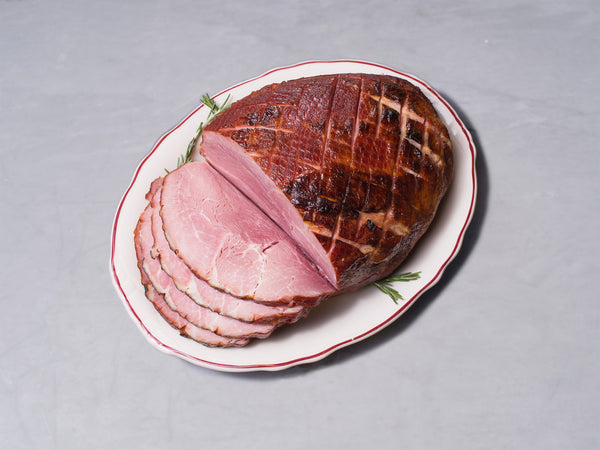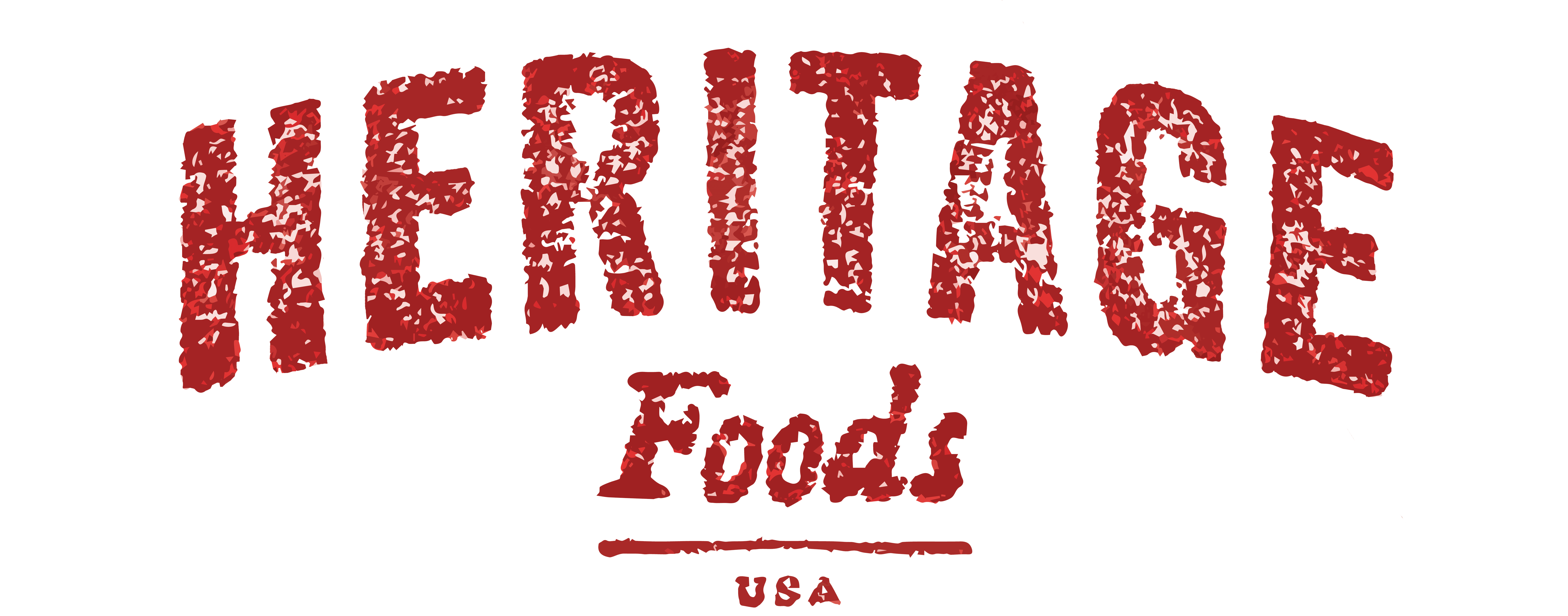
Brief History of the Ham and a Recipe for Brown Sugar and Mustard Glazed Ham
The ham is everywhere — in every deli in America — but what’s its real deal?
Hams weigh about 30 pounds. Every pig has two hams on him or her. For an average sized pig (about 200 lbs), the hams represent 1/3 of their overall weight. That’s a big portion, especially when you consider that the center cut pork loin only weighs about 8lbs for a total of 16lb per animal. It’s easy to understand the reasoning behind the axiom that pig profits go the way of the ham.
Hams are part of the hind section of the pig, and should not be called a leg since the leg could also come from the front shoulder. The hind shank is often left on the ham adding even more weight to the total product (hind shanks are about 3lbs each and fore shanks about 1.5lbs). In Europe the ham commands the highest per pound price on the animal while the loin commands the lowest. In the USA it’s the exact opposite. Now bacon has become one of the most expensive cuts.
At Heritage most of our 400 hams a week go to the curemaster Sam Edwards who has a family tradition of curing them that goes back almost 90 years. In 1926 S. Wallace Edwards, young captain of the Jamestown-Scotland ferryboat, began serving ham sandwiches to his ferry passengers …. sandwiches made from ham, salt-cured and hickory smoked, on his family farm. The demand for his ham grew so quickly that Captain Edwards soon began curing and selling hams on a full-time basis.
Today, Sam’s new Surry line has met with critical success thanks to an aging process that takes about 400 days. Heritage Foods USA also cures its own hams, bone-in or bone-out, using an injection cure that has been perfected by our partners at Paradise Locker Meats.
Injection cured hams are for everyday ham sandwiches or for breakfast with a sunny side up egg on top. Dry cured and smoked hams are the big ol’ legs of ham that sit on the bars or hang from the ceilings in pretty much every restaurant or hole-in-the-wall bar in Italy and Spain. Most hams in America are injection cured. But a few producers still dry age and smoke in the American tradition: Sam Edwards, Allan Benton, Nancy Newsome, Burgers Smokehouse and Finchville are among the top in their field.
How did the ham come to be the ambassador of dry curing around the world? The answer as with so many food traditions is that it came out of necessity. Typically when a pig was slaughtered, it was not all consumed in one sitting. As a result curing became an important process used to preserve the meat for future consumption. Because of the size of the ham it made sense that it was the chosen cut.
Pig breeds of years past had more marbling — marbling makes for better curing by helping with the fermentation process (marbling gives it the “twang”), as well as preventing the meat from drying out. This characteristic makes our heritage breeds especially suited for the curing process.
Easter and Christmas are hams’ biggest days, and as gastronomes around the country find new ways to incorporate ham into their menus we can’t help but love a good traditional glazed ham.
For the perfect balance of sweet and tangy try a simple recipe for Brown Sugar and Mustard Glazed Ham this year.
Mix equal parts Brown Sugar with Dijon Mustard (about a 1 1/4 cups of each will make enough glaze to coat a full ham) and add a Teaspoon of Ground Clove for added character and depth.
Coat the ham about 30 to 60 minutes before the end of cooking. Be sure to check on the ham as the glaze caramelizes to ensure the sugars don’t begin to burn.
Serve and enjoy! Happy Holidays.
